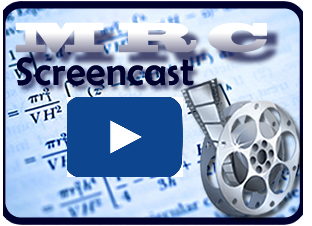Lesson 3: Solving Linear Systems by Substitution
Module 7: Systems of Linear Equations
Explore

iStockphoto/Thinkstock
Cooking can be a rewarding pastime. (It’s the cleaning up afterwards that’s not as fun!) Cooking is a creative endeavour at the same time as it’s a scientific one. Reproducing recipes takes an eye for exactness and a lot of patience.
Cooking can also require a bit of improvisation. Sometimes a recipe calls for a certain type of spice that you don’t have on hand. Instead of running to the store to buy the ingredient, you can substitute a different spice for the one listed in the recipe. You may even discover that the food tastes better than the original!
Did you know that you can use applesauce instead of vegetable oil when you are baking brownies? In fact, substituting applesauce for oil is a common practice to reduce fat in one’s diet! It’s a healthier alternative that does not compromise the taste. There are also other ingredients that you can use instead of oil, including prune puree, canned pumpkin, and even baby food.
In this lesson you will learn how to solve systems of equations by employing the principle of substitution. You will also learn when it is most appropriate to use this method.
Beginning with this lesson you will learn how to solve a system of equations algebraically. This means that you will use techniques to manipulate the equations in the system to find the solution that satisfies both equations. The method you will learn about first is called substitution.
Glossary Terms
Add this term and its definition to the Glossary Terms section in your noted. You may also want to add examples that demonstrate how each term is applied.
- substitution method
-----------------------------------
 Try This 7 - 9
Try This 7 - 9
Complete the following in your course folder ( binder).
Try This 7 - 9 Questions
Use the link below to check your answers to Try This 7 - 9.
Possible TT 7 - 9 Solutions
In the Try This exercise above you may have used the principle of substitution to generate a concluding statement or equation. When you solve a system of equations by substitution, you are reducing the system to a single equation with only one unknown variable. It is an algebraic way to find the point of intersection we found in Lesson 1.
Solve by Substitution
Consider the following question:
Example: Consider the following system of equations.
x - 2y = 8
3x + y = 10
Solve the system. (Solving a system means to find the point of intersection).
Solution:
The steps outlined in Steps 1 - 5 show one way you can solve this system using the method of substitution.
Before we start, number the equations, so they are easier to talk about:
x - 2y = 8 (1)
3x + y = 10 (2)
Step 1. Choose an equation. Isolate one of the variables in the equation.
A possibility is to solve (1) for x by adding 2y to each side.
x - 2y + 2y = 8 + 2y
x = 8 + 2y (1)
Step 2. Substitute the expression in step 1 into the other equation.
So substitute x = 8 + 2y into (2).
Equation (2) is 3x + y = 10. Replace the x with 8 + 2y
3x + y = 10
3(8+2y) + y = 10
Step 3. Expand the resulting expression, and solve for the unknown variable.
Use the distributive property.
24 + 6y + y = 10
24 + 7y = 10
24 - 24 + 7y = 10 - 24
7y = -14
7y/7 = -14/7
y = -2
Step 4. Substitute the answer from step 3. into one of the original equations to obtain the value of the other unknown.
Substitute y = -2 into the original equation (1) and solve for x.
x - 2y = 8 (1)
x - 2(-2) = 8
x + 4 =8
x + 4 - 4 = 8 - 4
x = 4
Step 5. Verify your solution by substituting the obtained values into the OTHER equation. IMPORTANT: Whatever equation we use in step 4, we use the other equation in the verification.
Since we used equation (1) in step 4, we use equation (2) in the verification.
3x + y = 10 (2)
sub x = 4 and y = -2 and make sure both sides equal.
3(4) + (-2) = 10
12 + ( -2) = 10
10 = 10
YES!!
So the solution or point of intersection is ( 4, -2).
 Share 1 - 3
Share 1 - 3
There are many ways of using the principle of substitution to solve a system of equations.
Work with a partner ( if possible) to complete the example above in a different manner using the substitution method.
Then answer the following questions:
1.When is it possible ( or a good idea) to use substitution to solve a system?
2. Which of the two ways of solving a system do you find most effective? Was there a difference? Explain why.
3.How does the substitution method compare with solving by graphing?
Possible S1-3 Solutions
-----------------------------------
When you have completed the Share activity, record any significant details relating to the method of substitution in your Strategies for Solving Linear Systems table you started in Lesson 2.
-----------------------------------
 Watch and Listen
Watch and Listen
Watch the following video for an example of Solving a Linear System using Substitution. There are also more practice questions on the bottom left you could do if you like.
